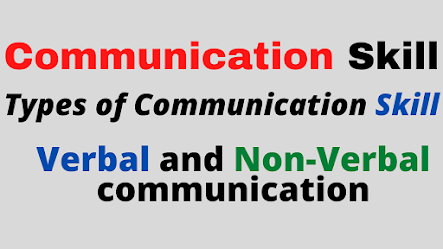Meaning of Communication:
- Communication is a dynamic process…
- Through this process we convey a thought or feeling to someone else.
- How it is received depends on a set of events, stimuli, that person is exposed to.
- How you say what you say plays an important role in communication.
- The word communication is derived from a Latin word ‘Communis’ which means to share or to participate.
- Two-way process of reaching mutual understanding, in which parties involved exchange information, news, ideas and feelings
Table of Contents
HOW TO BE A GOOD COMMUNICATOR:
- An Active Listener,
- An Effective Presenter,
- A Quick Thinker.
- A Win-Win Negotiator.
Process of Communication or Cycle of Communication:
Communication process has following elements;
- Context Sender/Encoder
- Encoding
- Message Channel/Medium
- Receiver/Decoder
- Decoding Feedback/Responsive
Context Sender/Encoder:
Every message begins with a certain context. It is the situation, setting or circumstances in which communication takes place. It includes country, culture social and psychological aspects. Different organizational, Professional and personal contexts have the strongest influence in the act of communication.
Encoding:
Putting ideas into a message is called encoding. The writer or speaker needs language for his message. When he converts his thoughts into meaningful language, it is called “Encoding”. So he is called “Encoder”. The language of the message should be easy.
Message:
Message is major part of communication process. It may be is written or spoken or non-verbal form. It must be complete and clear. It must have main idea.
Channel:
- Face-To-Face meetings,
- Telephones,
- Video Conferencing
- Letters,
- E-Mails,
- Memos,
- Reports
Strength – Role of Body Language.
Weakness – Not possible to give long list of directions
Written Communication:
Strength – A proof of a communication
Weakness – Written words does not show a person’s actual feelings.
- Listen actively,
- Reading information carefully,
- Avoid Confusion,
- Ask question for better understanding. • The audience or individuals to whom we are sending the information.
THE INFLUENCE FOR RECEIVER:
- The prior knowledge can influence the receiver’s understanding of the message.
- Blockages in the receiver’s mind.
- The surrounding disturbances.
- Verbal Reactions and Non-Verbal Reactions.
- Positive feedback and Negative feedback.
- Interpersonal communication
- Intrapersonal communication
- Group Communication
- Mass Communication
- Verbal Communication
- Non-Verbal Communication
On the base of Organizational Structure:
- Formal communication
- Informal communication
On the base of Flow or Direction:
- Downward communication
- Upward communication
- Horizontal communication
- Diagonal communication
SIX WAYS OF USING NON-VERBAL COMMUNICATION SKILLS EFFECTIVELY:
Some major areas of nonverbal behaviors to explore are:
Eye contact Facial expressions
- Gestures
- Posture and body orientation
- Proximity
- Paralinguistic
- Humor
- Direct Eye Contact: (Shows confidence)
- Looking downwards (Listening carefully or Guilty)
- Single raised eyebrow (Doubting)
- Both raised eyebrows (Admiring)
- Bent eyebrows (Sudden focus)
- Tears coming out (Emotional either happy or hurt)
- Smiling is a powerful cue that transmits:
- Happiness
- Friendliness
- Warmth
- Liking
- Affiliation
GESTURES:
- If you fail to gesture while speaking, you may be perceived as boring, stiff and unanimated.
- A lively and animated teaching style captures students’ attention, makes the material more interesting, facilitates learning and provides a bit of entertainment.
- Head nods, a form of gestures, communicate positive reinforcement to students and indicate that you are listening.
- You communicate numerous messages by the way you walk, talk, stand and sit.
- Standing erect, but not rigid, and leaning slightly forward communicates to students that you are approachable, receptive and friendly.
- Furthermore, interpersonal closeness results when you and your students face each other.
- Speaking with your back turned or looking at the floor or ceiling should be avoided; it communicates disinterest to your class.
PROXIMITY:
- Cultural norms dictate a comfortable distance for interaction with audience.
- You should look for signals of discomfort caused by invading young audience‘s space.
- Some of these are:
- Rocking,
- Leg swinging,
- Tapping,
- Gaze aversion,
- To counteract this, move around the classroom to increase interaction with your students. Increasing proximity enables you to make better eye contact and increases the opportunities for students to speak.
Paralinguistic :
This facet of nonverbal communication includes such vocal elements as:
- Tone
- Stress
- Rhythm
- Loudness
FEW FACTS:
- You have over 630 muscles in your body.
- Eye muscles are the busiest muscles in the body. Scientists estimate they may move more than 100,000 times a day.
- It takes 17 muscles to smile and 43 to frown.
- SO SMILE EVERY TIME YOU SEE SOMEONE.
- The strongest muscle in your body is your tongue.
- USE IT EFFECTIVELY.
- It takes the interaction of 72 different muscles to produce human speech.











